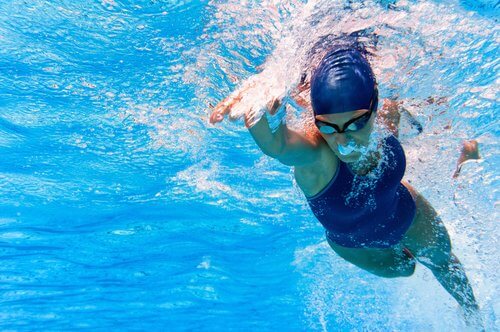How to Overcome a Fear of Water and Be a Better Swimmer

Overcoming a fear of water is one of the first steps when it comes to learning how to swim. Although many people are quick to get used to a pool or the ocean, others may develop a deep phobia that makes it harder for them to master different swimming techniques.
This is a more common problem than you might think and typically comes from a bad experience or fears from your parents back in childhood. It’s actually common in children, especially if they’re not able or allowed to play in the water at an early age.
However, regardless of how old you are there are certain tips to help you face your fear and enjoy the benefits of swimming. Some willpower is required on your part, but you can overcome this fear. Don’t worry!
Basic Exercises to Overcome a Fear of Water
How you overcome your fear of water will depend on your situation and why you’re afraid in the first place. Sometimes, you might need to go to therapy, where a professional can help you recognize and address past trauma.
One of the first steps to getting over a fear of pools or the ocean is to gradually reintroduce yourself to them. You’ll need to strengthen your self-confidence in order to avoid those feelings of stress when you come into contact with the water.
The exercises we’ll share below are a basic way of dealing with fear in several phases. They’re best for people who haven’t been able to learn to swim due to the anxiety they experience when they get in the water.
Adaptation Exercise

This first exercise for overcoming a fear of water will help you adapt your body to the experience of being in the pool. Since this should be a gradual process, you’ll first sit on the edge and only put your legs in the water.
Once you’ve gotten used to the feeling of your legs underwater, next, you’ll enter the shallow section of the pool little by little. You can use the pool ladder, the steps, or a railing to help.
Finally, put your arms and head under the water. Try to stay as relaxed as possible to avoid feeling like you’re drowning. This will help you understand that there’s nothing to be afraid of in this environment.
See: How to Make Better Decisions
Safety Exercise

Feeling safe while in the pool is essential for you to overcome any hydrophobia. In this exercise, you’ll focus on mastering your self-control while you’re underwater.
The best way to achieve this is by learning to float. All you need to do is enter a small or shallow pool where you can stand without difficulty. Then, practice inhaling above water and slowly exhaling under water.
Once you gain more confidence, you can repeat this exercise in a larger body of water.
Knowledge is Power
After you overcome your anxiety about being in the water, the logical next step is to take some swimming lessons. A good instructor will teach you many different techniques for how to swim, breathe, and handle emergency situations.
Knowing how to swim will allow you to feel more comfortable in the water. This is the last step in forming the link between a water-based environment and your happiness and well-being.
Tips to Improve Your Swimming Skills
Becoming a better swimmer requires patience and discipline. If you want to start getting better from day one, however, try to follow some of these simple tips:
Did you know? Five Yoga Exercises for Weight Loss
- Start by doing two swimming practices a week.
- Once you feel more comfortable in the water, increase this to four to five times a week, but no more than that.
- Avoid getting too much strenuous exercise. Remember that you should adapt your training program to your physical endurance and goals.
- Keep your head fixed when practicing the crawl or back stroke. Your body is all that should rotate, at the hip.
- Try to use fewer strokes as you practice.
- Maintain a good breathing rhythm. While there are many methods you can apply while swimming, choose the one that makes you the most comfortable. Ideally, you should take a breath every three strokes.
Are you still struggling to overcome your fear of the water? Stop being frustrated and avoiding it. Try some of the exercises we’ve suggested here and get advice from a swimming instructor to master some of the basic skills.
All cited sources were thoroughly reviewed by our team to ensure their quality, reliability, currency, and validity. The bibliography of this article was considered reliable and of academic or scientific accuracy.
- Krempel, M., & Jaatun, M. G. (2014). Learn to SWIM. In Proceedings – 9th International Conference on Availability, Reliability and Security, ARES 2014. https://doi.org/10.1109/ARES.2014.82
- Blanksby, B. A., Parker, H. E., Bradley, S., & Ong, V. (1995). Journal of science and medicine in sport. The Australian Journal of Science and Medicine in Sport. https://doi.org/10.1016/j.jsams.2014.09.010
- Grey, D., & Sadoff, C. W. (2007). Sink or Swim? Water security for growth and development. Water Policy. https://doi.org/10.2166/wp.2007.021
-
Barros Lázaro, A. (2018). Ejercicios para reducir el miedo al agua en personas con Trastorno del Espectro Autista.
This text is provided for informational purposes only and does not replace consultation with a professional. If in doubt, consult your specialist.








